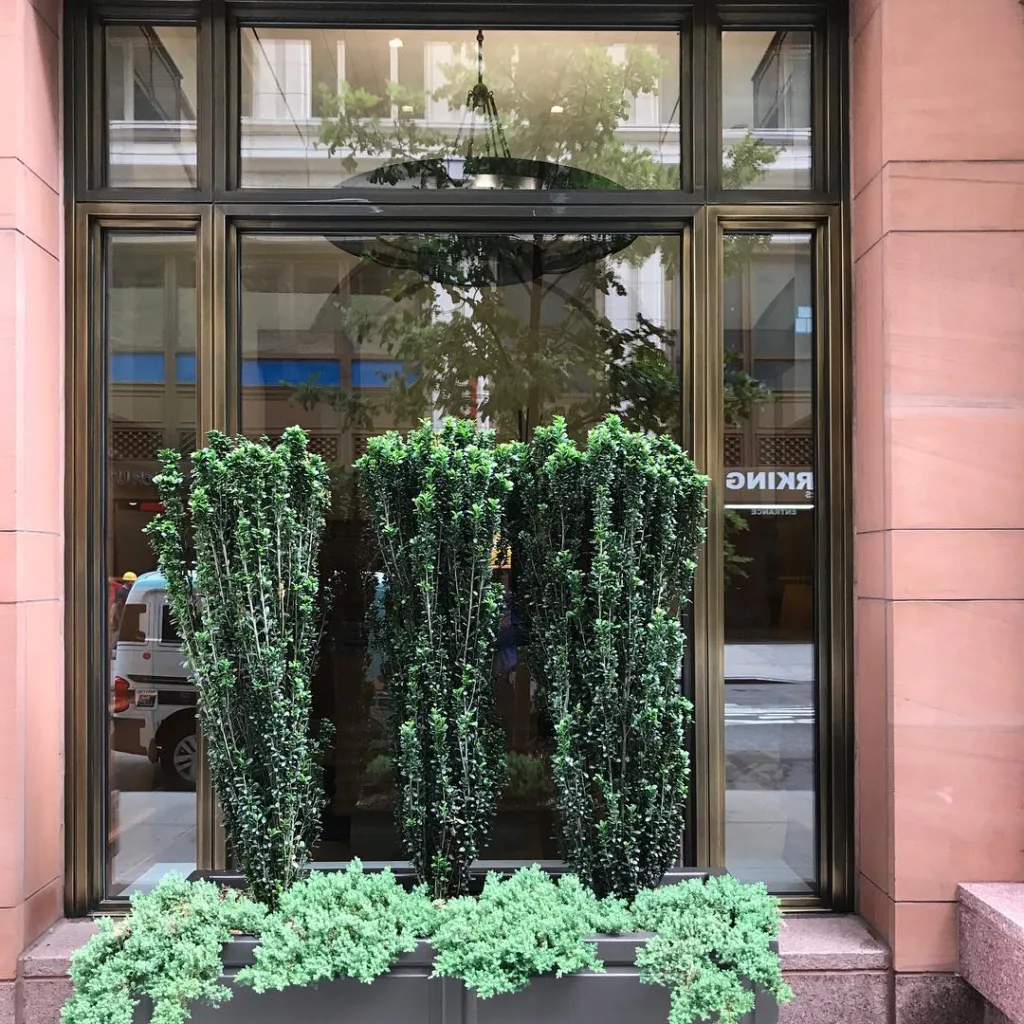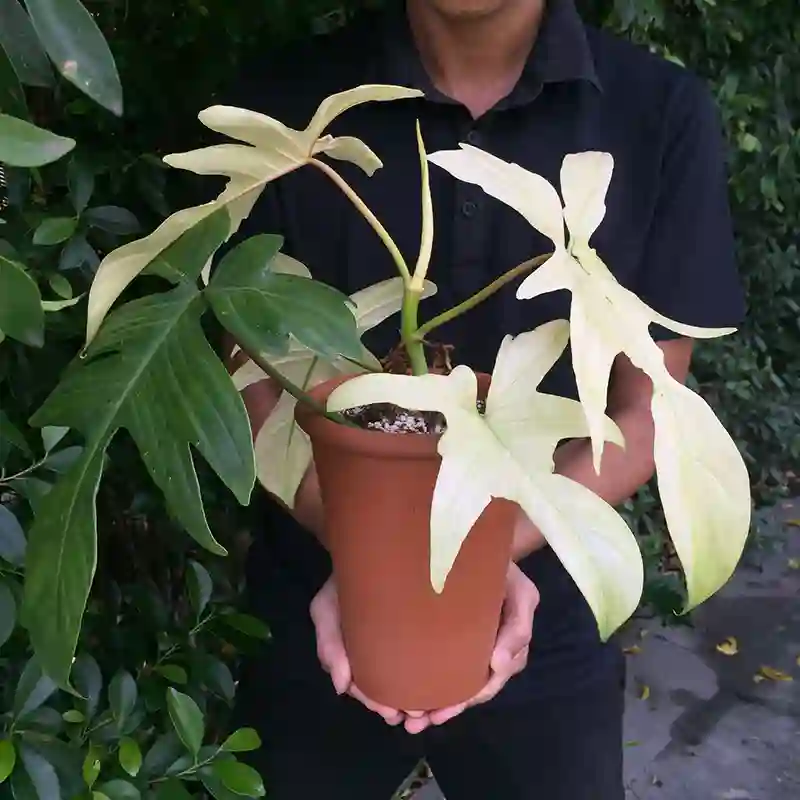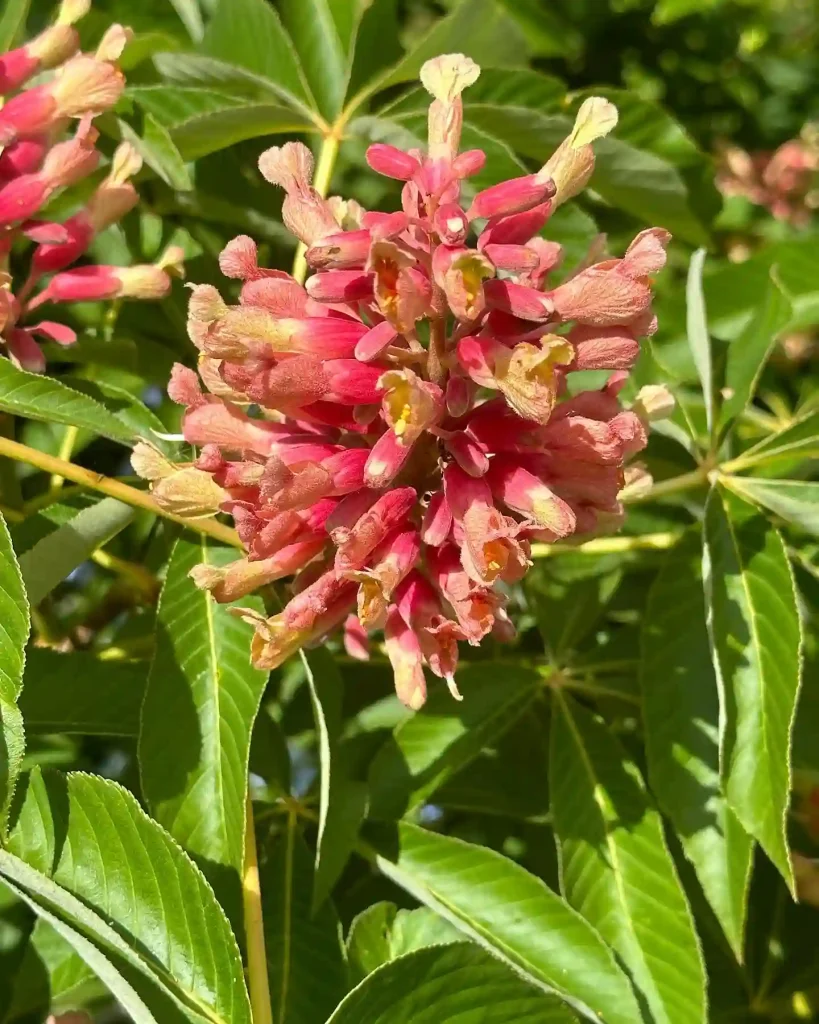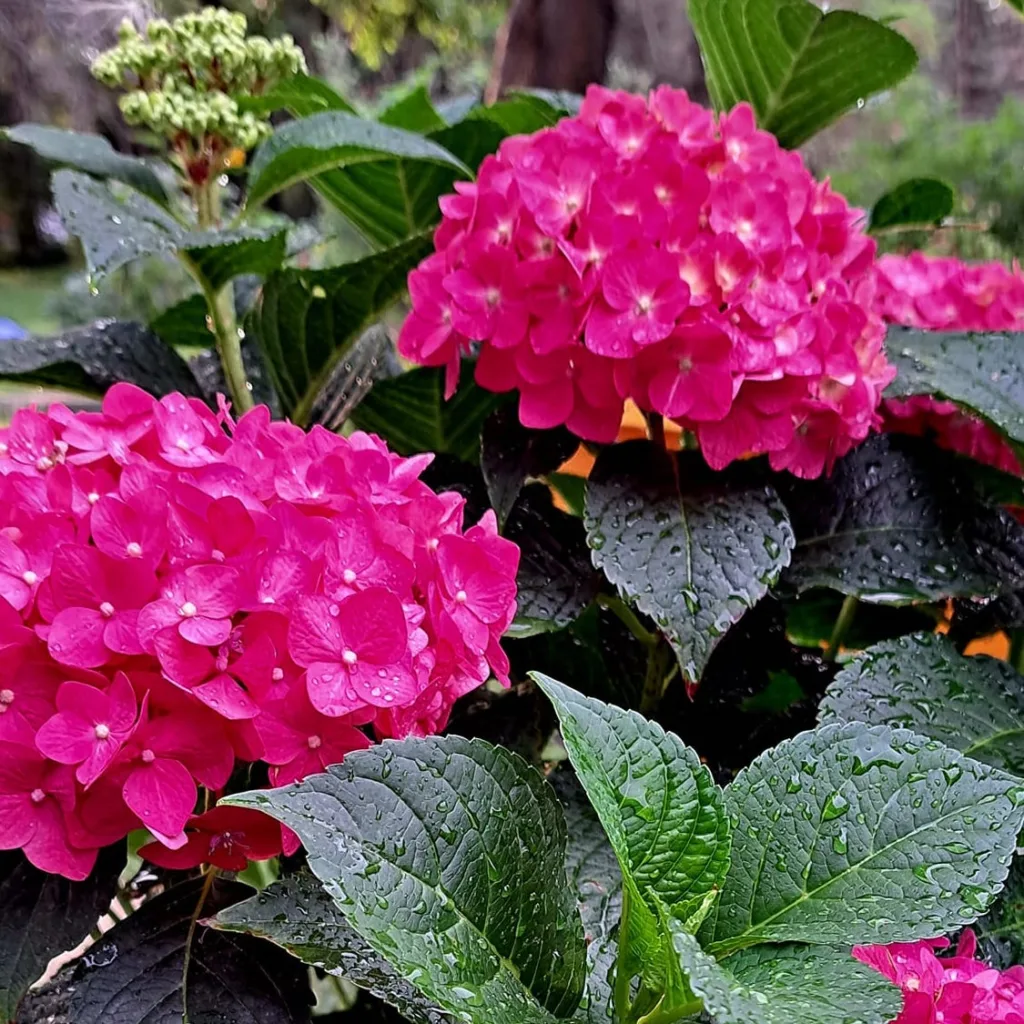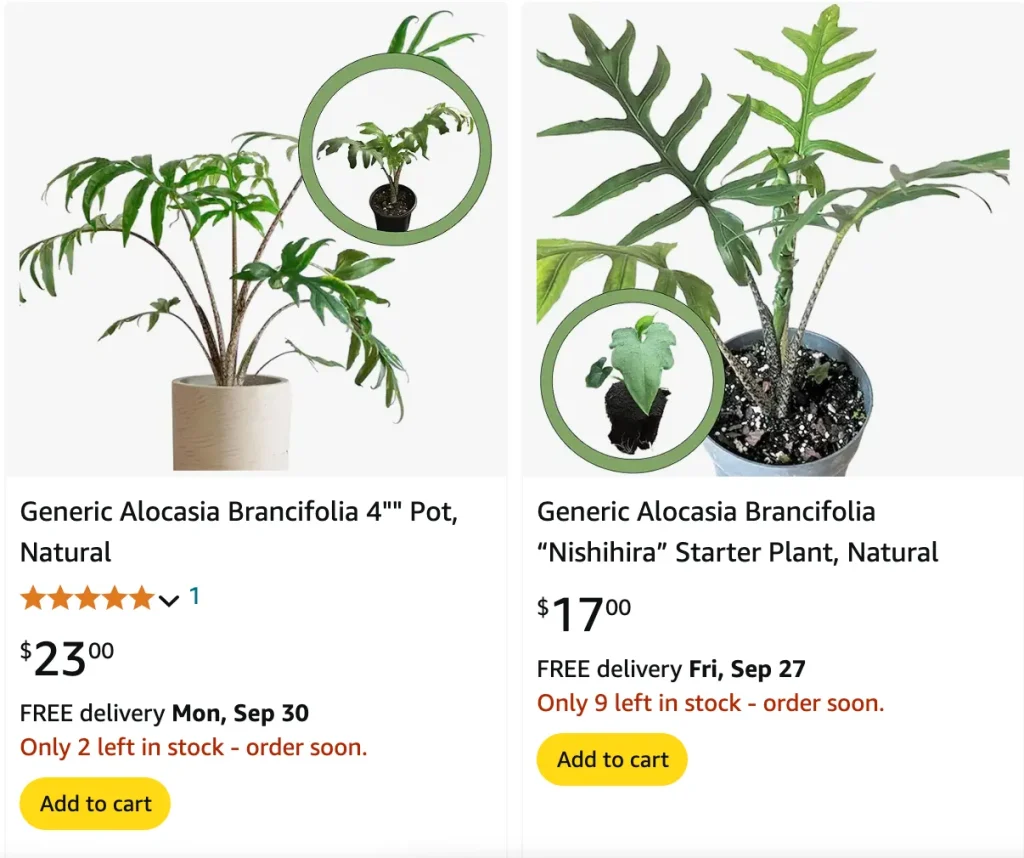
FAQs About Alocasia Brancifolia
If you’re considering adding Alocasia Brancifolia to your plant collection, you might have a few questions about this stunning plant. Having had my fair share of experience with it, I’m here to share some insights and answer frequently asked questions.
90 Species in Genus Alocasia – Elephant Ears
What Is Alocasia Brancifolia?
Alocasia Brancifolia, often known as the “Brandy Alocasia” or “Elephant Ear”, is a striking plant native to Southeast Asia. Its large, heart-shaped leaves and unique texture make it a popular choice for indoor gardeners. The plant is known for its glossy, dark green foliage with prominent white veins, giving it a dramatic appearance. It belongs to the Araceae family, which includes other well-loved houseplants like Monstera and Philodendron.
How to Care for Alocasia Brancifolia?
Taking care of Alocasia Brancifolia involves a few key practices to keep it thriving:
- Light: Alocasia Brancifolia prefers bright, indirect light. Too much direct sunlight can scorch its leaves, while too little light can stunt its growth and affect its vibrant coloration.
- Water: Water this plant regularly, keeping the soil consistently moist but not soggy. Overwatering can lead to root rot, so ensure the pot has good drainage. In the winter months, reduce watering slightly as the plant’s growth slows down.
- Humidity: Alocasia Brancifolia thrives in high humidity. It’s a good idea to place a humidifier near the plant or regularly mist its leaves to maintain the necessary moisture level.
- Temperature: This plant enjoys warm temperatures ranging from 65°F to 80°F (18°C to 27°C). Avoid placing it in drafty areas or near air conditioning units, as sudden temperature changes can stress the plant.
- Soil: Use a well-draining potting mix that retains moisture yet allows excess water to escape. A mix of peat, perlite, and pine bark works well.
How to Propagate Alocasia Brancifolia?
Propagating Alocasia Brancifolia can be done through several methods:
- Offsets: The easiest way to propagate is by dividing offsets or tubers. Carefully remove the plant from its pot and separate the offsets from the main root ball. Re-pot each offset in a new container with fresh potting mix.
- Leaf Cuttings: Although less reliable, you can try propagating using leaf cuttings. Cut a healthy leaf with a portion of the petiole (stem) and place it in water or moist soil. Keep it in a warm, humid environment until roots develop.
What to Plant With Alocasia Brancifolia?
Alocasia Brancifolia pairs beautifully with other tropical plants that enjoy similar conditions. Consider planting it alongside:
- Philodendron: Varieties like Philodendron Monstera or Philodendron Birkin complement the Alocasia with their lush foliage and similar care requirements.
- Fern: A Boston Fern or Maidenhair Fern can add a nice touch of greenery and help maintain high humidity around your Alocasia.
- Calathea: The vibrant patterns on Calathea leaves can create a stunning contrast with the bold look of Alocasia Brancifolia.
Is Alocasia Brancifolia Toxic?
Yes, Alocasia Brancifolia is toxic if ingested. It contains calcium oxalate crystals, which can cause irritation to the mouth, throat, and stomach. If you have pets or small children, it’s wise to place the plant out of their reach or consider a non-toxic alternative.
Benefits of Alocasia Brancifolia
Alocasia Brancifolia is not only visually striking but also offers several benefits:
- Air Purification: Like many houseplants, it helps in improving indoor air quality by filtering out toxins and increasing humidity.
- Aesthetic Appeal: Its dramatic foliage can add a touch of elegance and a tropical vibe to any room.
Common Problems and How to Fix Them
- Yellowing Leaves: This can be a sign of overwatering or poor drainage. Ensure the soil is not too wet and check that the pot has sufficient drainage holes.
- Brown Tips: Brown leaf tips often indicate low humidity. Increase humidity by misting the plant or using a humidifier.
- Pests: Watch for common pests like spider mites or aphids. Treat infestations promptly with insecticidal soap or neem oil.
Comparing Alocasia Brancifolia with Similar Plants
Alocasia Brancifolia is often confused with other Alocasia varieties, like Alocasia Polly or Alocasia Amazonica. While they share similarities, here are some differences:
- Alocasia Polly: Has more arrow-shaped leaves with prominent venation, whereas Alocasia Brancifolia’s leaves are broader and more heart-shaped.
- Alocasia Amazonica: Features similar leaf shapes but has a different pattern of veining and often grows larger leaves compared to the Brancifolia.
In summary, Alocasia Brancifolia is a fantastic plant for those who appreciate bold, dramatic foliage and are ready to provide the proper care. With the right conditions, it can thrive and bring a touch of the tropics to your home.
If i die, water my plants!
